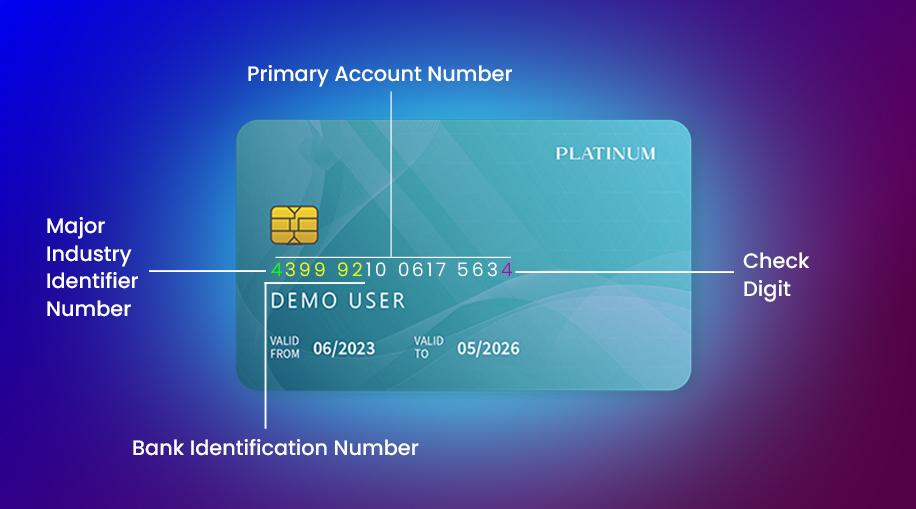Custom Search
Search across our curated content

Understanding Bank Identification Numbers (BINs) and Their Impact on Businesses
February 26, 2025 - Reading time: 9 minutes
Telegram
With credit and debit cards now dominating consumer transactions, businesses must understand the essential details embedded in these cards, particularly Bank Identification Numbers (BINs).But what exactly is a BIN number, and why is it important for merchants? This guide covers everything you need to know about BINs, including how they work, their benefits, and their role in fraud prevention.
What Is a Bank Identification Number (BIN)?
Why Are BINs Important for Businesses?
- Issuing bank name
- Bank contact details (address and phone number)
- Card network (Visa, MasterCard, American Express, Discover, etc.)
- Card type (debit, credit, prepaid, etc.)
- Card level (basic, platinum, black, business, etc.)
- Address verification details
- Country of issuance
How Do BINs Work?
When a customer makes a purchase, the BIN system helps the card issuer validate the transaction by:- Identifying the issuing bank
- Checking the cardholder’s account status
- Confirming sufficient funds or credit
- Approving or denying the transaction
BIN vs. Bank Identification Code (BIC)
Many confuse Bank Identification Numbers (BINs) with Bank Identification Codes (BICs).- A BIC (also called a SWIFT code) is an 8 to 11-digit code used for international bank transfers.
- A BIN, on the other hand, identifies institutions that issue payment cards and helps merchants evaluate transaction security.
Key Benefits of Bank Identification Numbers (BINs)
For retailers and online merchants, using BINs offers several advantages:1. Accept Multiple Payment Methods
2. Speed Up Transactions
By automating card verification, BINs enable faster checkouts, improving the customer experience and increasing daily transaction volume.3. Enhance Fraud Prevention
BINs help detect fraudulent transactions by verifying:- If the cardholder's billing address matches the registered bank details
- If the card's issuing country aligns with the merchant's location
- If a transaction shows suspicious patterns, such as repeated declines
4. Improve Compliance
5. Optimize Marketing Strategies
Analyzing BIN data can reveal consumer spending habits, helping businesses tailor promotions. For example, if most customers use Visa, a company might offer Visa-specific discounts to drive sales.6. Monitor Chargebacks
BINs assist in tracking chargeback trends, allowing businesses to spot problematic issuers and take proactive steps to reduce disputes.Where to Find a BIN Number
-
The first digit represents the card’s Major Industry Identifier (MII):
- 1-2: Airline & future industry cards
- 3: Travel & entertainment cards (e.g., American Express)
- 4-5: Financial institutions (e.g., Visa, MasterCard)
- 6: Merchandising & financial cards
- 7-9: Other sectors (e.g., gas, telecom, healthcare)
- The first six digits collectively form the BIN, identifying the issuing institution.
Common BIN Examples:
- Visa: 4*****
- MasterCard: 51****, 45****
- American Express: 34****, 37****
- Discover: 6011, 622126-622925, 644-649, 65
- Diners Club: 36****
Protecting BINs from Fraud
What Is BIN Scamming?
Scammers trick individuals into revealing BIN details by impersonating bank representatives. They may call victims, claim there is a security issue, and ask them to confirm their card number.What Is BIN Cloning?
Criminals steal BIN data and duplicate payment cards, using them for unauthorized transactions. They extract card details through techniques like:- Magnetic strip skimming
- Chip data cloning
How to Prevent BIN Fraud
- Multiple small transactions from the same card type
- Repeated declines in a short period
- Unusual transaction volumes from a single location
The Future of BINs
As digital payments evolve, BINs are expanding to accommodate more card types and brands. The transition from 6-digit to 8-digit BINs is already underway, allowing for more diverse financial services and better security measures.For businesses, staying informed about BIN technology and fraud prevention is crucial for securing transactions and enhancing customer trust.Final Thoughts
Understanding Bank Identification Numbers (BINs) can help businesses optimize payment processing, prevent fraud, and improve customer experience. As technology advances, merchants should leverage BIN data to stay competitive in the digital payment landscape.Would you like to integrate a BIN lookup tool on your website? Let us know how we can help!Latest posts
Understanding Bank Identification Numbers (BINs) and Their Impact on Businesses100% Working Legal Ways to Get Free Netflix in 2025
New 100% Working Netflix Cookies - Hourly Updated [January 2025]
BIN FOR SPOTIFY 3 MONTHS 2025
New CRUNCHYROLL BIN METHOD 2025
Telegram
Search
About
BincodeToCC Blog shares premium BIN codes that are geared for online testing purposes. Bank Identification Number (“BIN”) or Issuer identification number (“IIN”) is the first six digits of a bank card number or payment card number and it is part of ISO/IEC 7812. It is commonly used in credit cards and debit cards, stored-value cards, gift cards and other similar cards.